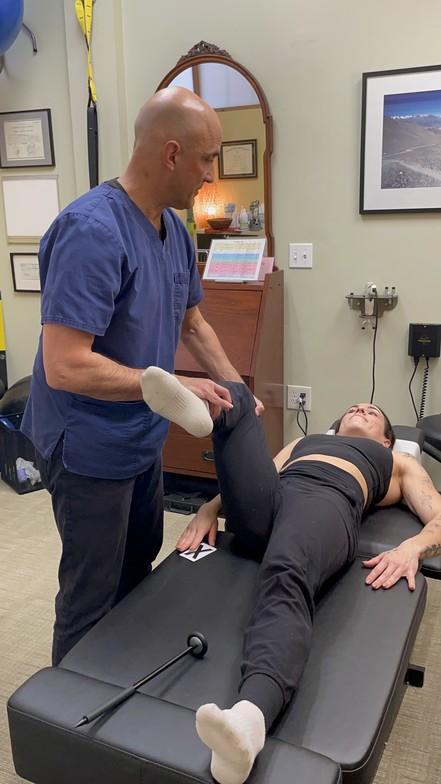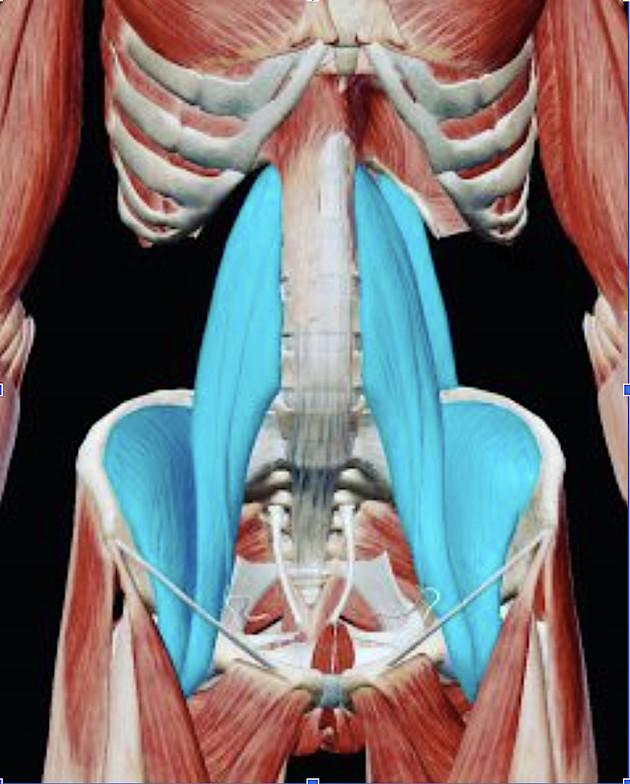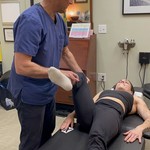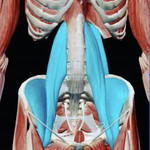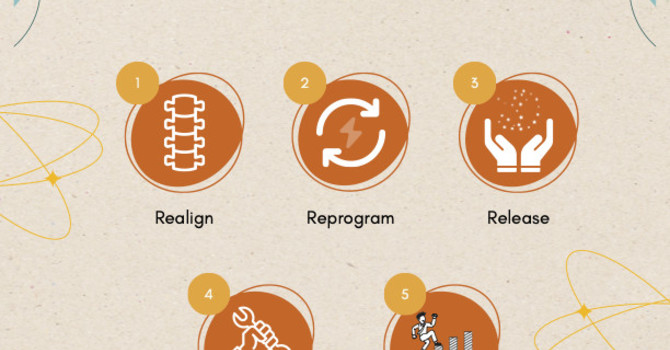The patient is an athletic female in her late 50s with recent hip replacement. ⠀⠀⠀⠀⠀⠀⠀⠀
She presents with a hot low back from bending forward to pick something up. She also reports that her groins feel very tight. She states that she has been under a lot of family stress over the past year, and over the past month in particular.
Evaluation reveals a spastic Rt Lumbar Multifidus (the deep muscles of the low back) and bilateral shortened Psoas (the deep hip flexors which help to raise the thighs, or to bend your torso forward if you are standing). The pelvis is sheared (think of the spine twisting one way and the pelvis the other way), putting pressure on the disc of L5 (the bottom lumbar verterbra).
Both Iliacus (the muscle on the inside of the hip bone in the pelvic bowl) and Gluteus Medius (the muscles on the outer part of the Glutes, which help stabilize side to side movements) are weak.
The Ilio Cecal Valve (ICV):
Neuro emotional (mind-body, stress physiology, which means how emotion plays out in the physical body) evaluation reveals an active ICV (Iliocecal valve, the sphinctor between the small and large intestine. The ICV is innervated by nerves from the low back and often activates with extreme stress. The ICV which cross tests to the Emotional Neurovascular System and directly correlates with the acupuncture Wood element. The traditional Chinese medical physiology utilizes the acupuncture meridian system. Meridians correlate to specific organs, although an active meridian doesn't necessarily correlate with organ pathology. The ICV often directly correlates with the emotional body since polypeptides of emotion are found in the fascia of the body. And when active, it commonly triggers the low back via a visceral-somatic reflex.
Alignment:
I found a subluxated (misaligned) Rt Ilium (hip bone), posterior Sacrum and rotated L5. I also found a weak Rt Psoas and spasmed Rt Lumbar erectors.
Treatment:
1. Chiropractic, ART, Cupping
I adjusted the pelvis and low back using various gentle and safe chiropractic techniques, released the Psoas with ART (Active Release Technique, the Gold Standard for specific muscle release) and released the low back muscles with Myofascial Decompression (cupping, using round plastic Chinese Medicine cups and a pump to create the suction).
2. NET
Once the bones are aligned and the tight muscles are released, I used NET, a scientifically proven mind-body technique, to help balance and restore the emotional body which was triggering the physical body.
3. PDTR
I used PDTR to find patterns of "hidden" muscle imbalance, and to restore proper muscle to muscle as well as muscle to brain communication loops.
The brain is the ultimate master control system in the body. It receives information from thousands of receptors throughout the body - joints, fascia, muscle, ligaments & tendons. Some receptors (Mechanoreceptors) convey movement & position information such as vibration, stretch, pressure. Other receptors (Nociceptors) convey pain, and are specifically reactive to sensations such as a pin prick, slap sensation, hot & cold.
PDTR (Proprioceptive Deep Tendon Reflex technique) focuses on this feedback system, and allows the trained practicioner to assess and correct abberant (incorrect) feedback loops which give the brain the wrong information, leading to the brain essentially telling the muscles to turn on or off too much and incorrectly. This leads to chronic patterns of spasm, weakness and pain which don't seem to respond to traditional manipulation of muscles and joints.
The Result:
The patient reported feeling immediately better. She was able to move more freely and without pain.
Afterthoughts:
The very act of replacing a joint is violent (although perhaps necessary) to the body which leads to all sorts of "alarm bells" triggered from muscles and other structures in the region. But we must also keep in mind that the very fact that a (in this case hip) joint is degenerated enough to necessitate a replacement more than implies that there was likely decades of dysfunctional biomechanics that lead to the situation.
So when I see a patient with a prosthesis (hip or knee are most common), I already know to expect a whole story in the body, much of which needs to be rewritten. An anatomy professor of mine in the cadavar labs once said that our bodies are a scrapbook of our lives. And another professor once said that every patient enters the exam room with all the answers and that it is our job to ask the right questions.
My use of multiple advanced techniques enables me to ask these questions. The result is often resolution of much of the pain and suffering a patient often originally comes in with. But even though I am usually able to make many huge changes relatively quickly, the general rule still applies - the longer something has been going on, the longer it will take to resolve it.


